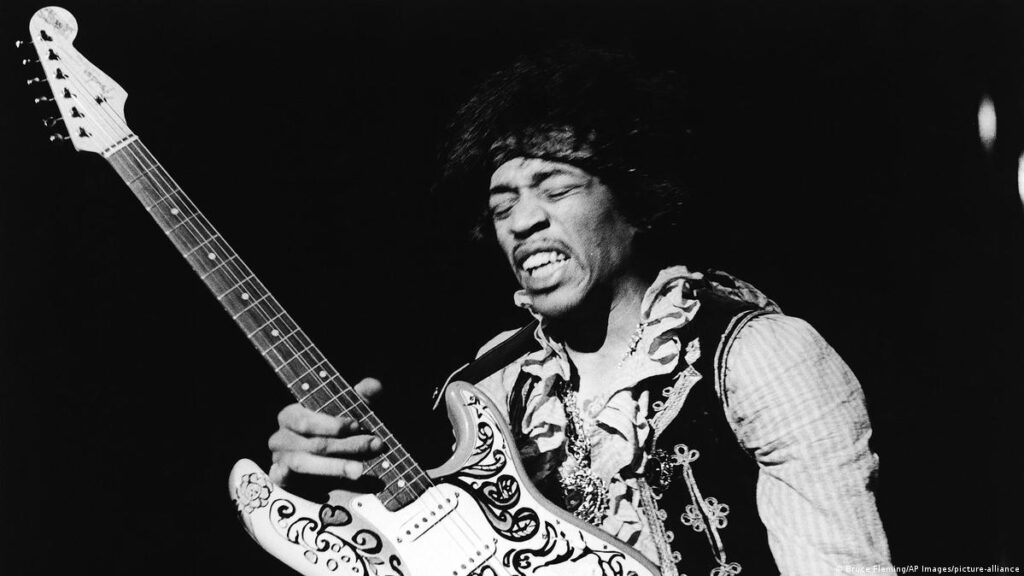
Have you ever heard of the 27 Club? It is an informal list of popular musicians, artists, actors, and other celebrities who died at age 27, often as a result of drug and alcohol abuse or violent means such as homicide, suicide, or transportation-related crashes. The phenomenon has been a subject of popular culture, celebrity journalism, and entertainment industry lore since the late 1960s, when several prominent rock stars died at that age. Some of the most famous members of the 27 Club include:
- Robert Johnson, a blues legend who died in 1938 from suspected poisoning.
- Brian Jones, a founding member of the Rolling Stones, drowned in his swimming pool in 1969.
- Jimi Hendrix, the guitar virtuoso who choked on his own vomit after taking barbiturates in 1970.
- Janis Joplin was a soulful singer who died of a heroin overdose in 1970.
- Jim Morrison, the charismatic frontman of the Doors, died of heart failure in his bathtub in 1971.
- Kurt Cobain, grunge icon and Nirvana leader, shot himself in 1994.
- Amy Winehouse, a soulful singer who died of alcohol poisoning in 2011.
But what is the story behind the 27 Club? Is there a curse or a conspiracy behind it? How common is it for celebrities to die at 27? And what is the cultural impact and legacy of these artists? In this article, we will explore the mystery and myth of the 27 Club and try to answer these questions.

History of the 27 Club phenomenon
The term “27 Club” was not coined until after the death of Kurt Cobain in 1994, when rock fans noticed an unexplainable coincidence. The similarity was that most rock singers seemingly died when they were nearing 27 years of age. However, some media outlets had already used the term in 1969, when guitarist Brian Jones of The Rolling Stones passed away. He was the first of four rock stars who died at 27 between 1969 and 1971. The others were Jimi Hendrix, Janis Joplin, and Jim Morrison. These four deaths shocked the world and marked the end of an era of peace and love.
The phenomenon gained more attention in 1994, when Kurt Cobain committed suicide by shooting himself in the head. His mother reportedly said: “Now he’s gone and joined that stupid club. I told him not to join that stupid club.” She was referring to Hendrix, Joplin, and Morrison dying at the same age. Some fans even speculated that Cobain intentionally timed his death to join the club or to achieve fame and immortality.
The most recent addition to the club was Amy Winehouse, who died of alcohol poisoning in 2011. Her death sparked a renewed interest in the phenomenon and prompted many tributes and documentaries. She had also expressed her fear of dying at 27 before her death.
How did the members of the 27 Club die?
Most of the members of the 27 Club died as a result of risky lifestyles, including but not limited to suicide, homicide, and drug and alcohol abuse. Some of their deaths were also suspicious and unclear. For example:
- Robert Johnson was allegedly poisoned by a jealous husband who did not like him flirting with his wife. He died three days later after suffering severe pain.
- Brian Jones was found dead at the bottom of his swimming pool. The official cause was drowning by misadventure, but some people suspect foul play or murder.
- Jimi Hendrix died after choking on his own vomit while sleeping. He had taken nine sleeping pills that were prescribed for his girlfriend. Some people claim that he was murdered by his manager or by the CIA.
- Janis Joplin died of a heroin overdose in her hotel room. She had injected a batch that was much purer than usual. Some people believe that she was given the bad heroin on purpose by someone who wanted to harm her.
- Jim Morrison died of heart failure in his bathtub in a hotel in Paris. No autopsy was performed, and no drugs were found in his system. Some people think that he faked his death or that he overdosed on heroin elsewhere and was moved to the hotel by his girlfriend or drug dealers.
- Kurt Cobain shot himself in the head with a shotgun in his home. He left a suicide note that ended with “I love you, I love you.” Some people argue that he was murdered by his wife or by a hired killer.
- Amy Winehouse died of alcohol poisoning in her home. She had a blood alcohol level of 0.416%, which is more than five times the legal limit. She had also struggled with drug addiction and bulimia for years. Some people blame her fame and the media for her downfall.

Theories and myths about the 27 Club
The 27 Club has sparked many theories, myths, and legends about the significance of dying at that age. Some believe that there is a curse or a conspiracy behind the deaths, while others attribute them to coincidence or lifestyle factors. Some of the most common theories and myths are:
- The Saturn Return Theory: This is an astrological theory that states that around the age of 27, the planet Saturn returns to the same position that it was in when a person was born. This can bring a lot of emotional turmoil, challenges, and changes in a person’s life. Some people may not be able to cope with these changes and resort to self-destructive behaviours or suicide.
- The White Lighter Theory: This is a superstition that states that using a white lighter is bad luck and can cause death. Some people claim that all the members of the 27 Club had a white lighter on them when they died. However, this theory is easily debunked by the fact that white lighters did not exist until 1973, after some of the members had already died.
- The Crossroads Theory: This is a legend that states that some musicians made a deal with the Devil at a crossroads in exchange for fame and talent. However, the price they had to pay was their souls and their lives at 27. This theory is based mainly on the story of Robert Johnson, who was said to have sold his soul to play the blues.
- The Illuminati Theory: This is a conspiracy theory that states that some celebrities are members of a secret society called the Illuminati, which controls the world through various means. However, some celebrities who want to expose or leave the Illuminati are killed by them at 27 as a warning or a sacrifice. This theory is often supported by finding hidden symbols or messages in their music or art.

How to avoid the “27 Club Curse”
While there is no scientific evidence or logical explanation for the 27 Club phenomenon, some people may still fear joining the club or losing their loved ones to it. Here are some tips on how to avoid the 27 Club curse:
- Seek professional help if you are suffering from mental health issues, such as depression, anxiety, or suicidal thoughts. There is no shame in asking for help and getting treatment.
- Avoid substance abuse and addiction, such as with drugs and alcohol. They can impair your judgement, damage your health, and increase your risk of overdose or accidents.
- Live a healthy and balanced lifestyle, such as by eating well, exercising regularly, sleeping enough, and managing stress. These habits can boost your mood, energy, and immunity.
- Surround yourself with positive and supportive people, such as family, friends, mentors, or role models. They can offer you love, guidance, encouragement, and inspiration.
- Pursue your passions and goals, but do not let them consume or define you. Remember that there is more to life than fame and success. Find joy and meaning in other aspects of your life, such as hobbies, relationships, spirituality, or charity.
The cultural impact and legacy of the 27 Club
The 27 Club is not only a list of tragic deaths but also a reflection of the cultural impact and legacy of these artists. Their music and art have influenced and inspired millions of people around the world, and their stories have raised awareness and debate about issues such as mental health, addiction, and violence.
The 27 Club is a reminder of the fragility and beauty of life and the power and mystery of art. Some of the ways that these artists have impacted and left a legacy are:
- Robert Johnson: He is widely regarded as one of the most influential blues musicians of all time and a pioneer of rock and roll. His songs have been covered by countless artists, such as Eric Clapton, Led Zeppelin, The Rolling Stones, and Bob Dylan. He was also inducted into the Rock and Roll Hall of Fame and the Grammy Hall of Fame.
- Brian Jones: He was the founder and original leader of The Rolling Stones, one of the most successful and influential rock bands in history. He played multiple instruments and contributed to the band’s diverse musical styles, such as blues, rock, folk, psychedelic, and world music. He was also a fashion icon and a symbol of the Swinging Sixties.
- Jimi Hendrix: He is widely regarded as one of the greatest guitarists and musicians of all time and a pioneer of hard rock, psychedelic rock, and heavy metal. He revolutionised the electric guitar with his innovative techniques, such as feedback, distortion, wah-wah, and effects pedals. He also performed memorable shows at the Woodstock and Monterey Pop festivals. He was inducted into the Rock and Roll Hall of Fame and the Grammy Hall of Fame.
- Janis Joplin: She is widely regarded as one of the greatest singers and performers of all time and a pioneer of blues rock, soul, and psychedelic rock. She had a powerful and distinctive voice that expressed raw emotion and passion. She also challenged the stereotypes and norms of female singers with her rebellious and unconventional style. She was inducted into the Rock and Roll Hall of Fame and the Grammy Hall of Fame.
- Jim Morrison: He was the charismatic frontman and lyricist of The Doors, one of the most influential and controversial rock bands in history. He had a poetic and provocative style that explored themes such as death, sexuality, rebellion, and spirituality. He also became a cult figure and a symbol of counterculture with his rebellious and unpredictable behaviour. He was inducted into the Rock and Roll Hall of Fame.
- Kurt Cobain: He was the leader and songwriter of Nirvana, one of the most influential and popular rock bands in history, and a pioneer of grunge music. He had a distinctive voice and guitar style that combined melody and noise. He also wrote songs that expressed his angst, alienation, and dissatisfaction with society. He became a voice and an icon for Generation X. He was inducted into the Rock and Roll Hall of Fame.
- Amy Winehouse: She was one of the most talented and successful singers of her generation and a pioneer of neo-soul music. She had a unique voice that blended jazz, soul, R&B, pop, and hip-hop influences. She also wrote songs that reflected her personal struggles with love, addiction, and fame. She won five Grammy Awards and sold millions of records worldwide. She was also a fashion icon and a trendsetter with her retro and eclectic style. Check out some of the live Amy Winehouse performances.
Why do some musicians fear joining the 27 Club?
Some musicians who are approaching or have reached the age of 27 may fear joining the 27 Club or losing their friends or colleagues to it. This fear may stem from various factors, such as:
- The pressure and stress of fame and success, which can affect their mental health and well-being.
- The exposure and temptation of drugs and alcohol, which can impair their judgement and health.
- The superstition and paranoia of the “27 Club” phenomenon can make them believe that they are cursed or doomed.
- The comparison and competition with other musicians can make them feel inadequate or insecure.
- The desire and expectation to leave a legacy or a mark in the music industry can make them feel anxious or ambitious.
Some examples of musicians who have expressed their fear of joining the 27 Club are:
- Adele: She said in an interview in 2015 that she was “very frightened” of turning 27 because of the 27 Club. She also named her album 25 as a way of “freezing” her age before she turned 27.
- Lady Gaga: She said in an interview in 2013 that she was “obsessed” with the 27 Club and that she had nightmares about dying at that age. She also said that she felt a lot of pressure to live up to the legacies of her idols, such as Amy Winehouse and Kurt Cobain.
- Ed Sheeran: He said in an interview in 2017 that he was “relieved” to turn 28 because he had survived the “27 Club.” He also said that he had quit smoking and drinking to avoid the fate of his peers, such as Amy Winehouse and Avicii.
Are there any books or documentaries on the 27 Club?
There are many books and documentaries that explore the 27 Club phenomenon and the lives and deaths of its members. Some of them are:
- Books:
- The 27s: The Greatest Myth of Rock & Roll by Eric Segalstad and Josh Hunter: This book provides a comprehensive and chronological account of the members of the 27 Club, from Robert Johnson to Amy Winehouse. It also includes illustrations, trivia, quotes, and anecdotes.
- 27: A History of the 27 Club Through the Lives of Brian Jones, Jim Morrison, Janis Joplin, Jimi Hendrix, Kurt Cobain, and Amy Winehouse by Howard Sounes: This book provides a detailed and investigative biography of six of the most famous members of the 27 Club. It also examines their common traits, such as difficult childhoods, musical talent, drug addiction, and troubled relationships.
- Up Jumped the Devil: The Real Life of Robert Johnson by Bruce Conforth and Gayle Dean Wardlow: This book provides an authoritative and definitive biography of Robert Johnson, one of the earliest and most influential members of the 27 Club. It also debunks many myths and legends about his life and death.
- Documentaries:
- Amy (2015): This documentary provides an intimate and heartbreaking portrait of Amy Winehouse, one of the most recent and talented members of the 27 Club. It features archival footage, interviews, home videos, and music performances.
- Kurt Cobain: Montage of Heck (2015): This documentary provides an immersive and personal exploration of Kurt Cobain’s life and art, one of the most iconic and influential members of the 27 Club. It features animation, interviews, home movies, and music recordings.
- Jimi Hendrix: The Guitar Hero (2010): This documentary provides a tribute and a celebration of Jimi Hendrix’s music and legacy as one of the most innovative and virtuosic members of the 27 Club. It features interviews, rare footage, and music performances.
The 27 Club is a fascinating and tragic phenomenon that has captivated and intrigued many people for decades. It is a list of talented and influential artists who died at age 27, often as a result of their risky lifestyles. It is also a reflection of their cultural impact and legacy, which have inspired and influenced millions of people around the world. The 27 Club is a reminder of the fragility and beauty of life and the power and mystery of art.
However, the 27 Club is not a curse or a conspiracy, but a coincidence and a myth. There is no scientific or logical evidence that dying at 27 is more common or significant than dying at any other age. The 27 Club is not a destiny or a fate, but a choice and a consequence. The members of the 27 Club did not die because they were 27, but because they made decisions that led to their deaths.
Therefore, we should not fear or glorify the 27 Club but instead learn from it and appreciate it. We should not let it define or limit us, but challenge and motivate us. We should not follow or imitate it, but respect and honour it. We should not join or leave it, but live and love it.
If you are interested in learning more about the 27 Club phenomenon and its members, you can check out some of the books and documentaries mentioned above. You can also listen to their music and art, which are their best and most lasting gifts to the world.
